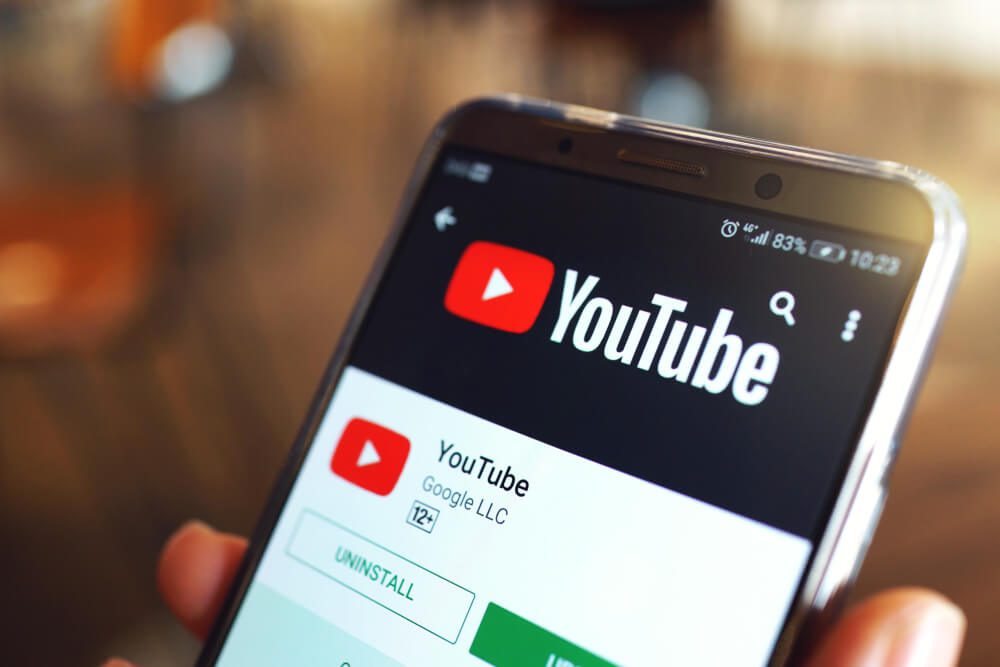
11 Tips To Combine SEO/YouTube To Boost Your Rankings
YouTube is the top platform for videos worldwide. People often go straight to this platform when they want their questions answered through video. For your brand, this means an opportunity to gain more exposure. However, it is also a challenge.
With millions of videos on YouTube all vying for users’ attention, how can yours be seen? Learn how an SEO agency does it.
This article will discuss the following:
 A well-crafted title can make the difference between success and failure for your video. You want your videos to have compelling titles. To do this, use the relevant keywords you found via your research. Use emotional triggers and test different titles to see which performs best. Doing this makes your titles descriptive and attention-grabbing.
It is also crucial to keep your titles concise and straightforward. Remember that YouTube only displays the first 60 characters of a title. This means you have to include the most important information within that limit. Instead of using clickbait and misleading titles, tell your viewers exactly what your video is about.
A well-crafted title can make the difference between success and failure for your video. You want your videos to have compelling titles. To do this, use the relevant keywords you found via your research. Use emotional triggers and test different titles to see which performs best. Doing this makes your titles descriptive and attention-grabbing.
It is also crucial to keep your titles concise and straightforward. Remember that YouTube only displays the first 60 characters of a title. This means you have to include the most important information within that limit. Instead of using clickbait and misleading titles, tell your viewers exactly what your video is about. Many people on YouTube judge whether a video is worth their time based on its thumbnail alone. The key to an attention-grabbing and enticing thumbnail is customization. With custom thumbnails, you can use high-quality visuals that represent your video’s content. Add text or graphics to highlight the main points.
No matter how you want to design your thumbnails, always keep them consistent with your brand. Consult Google’s recommendations for better results.
Many people on YouTube judge whether a video is worth their time based on its thumbnail alone. The key to an attention-grabbing and enticing thumbnail is customization. With custom thumbnails, you can use high-quality visuals that represent your video’s content. Add text or graphics to highlight the main points.
No matter how you want to design your thumbnails, always keep them consistent with your brand. Consult Google’s recommendations for better results. Improving your YouTube SEO can be challenging, especially if it is your first time. Thankfully, you can rely on analytics to guide you. By monitoring your analytics, you learn how your videos perform and identify weak points that need reinforcement.
Analytics provides various metrics; it is important to determine which ones you care about most. These metrics may include views, watch time, engagement, retention, and conversion rates.
Improving your YouTube SEO can be challenging, especially if it is your first time. Thankfully, you can rely on analytics to guide you. By monitoring your analytics, you learn how your videos perform and identify weak points that need reinforcement.
Analytics provides various metrics; it is important to determine which ones you care about most. These metrics may include views, watch time, engagement, retention, and conversion rates.
- Keyword research
- Video titles, tags, and descriptions
- Custom thumbnails
- Audience retention
- Engagement
- Closed captions
- Analytics
- Promotion
Want to learn more about the Digital Authority Partners approach to SEO? Watch this video!
1. Conduct Keyword Research
Through keyword research, identify and analyze the search terms people use to find information online. For YouTube, this involves finding the relevant keywords users employ for their searches. Include these keywords in your video’s metadata to increase its visibility in search results. Having the right keywords gives your SEO strategy a strong start, and finding relevant keywords requires you to consider your topic and content. Use specific long-tail keywords and avoid keyword stuffing.2. Optimize Video Titles
 A well-crafted title can make the difference between success and failure for your video. You want your videos to have compelling titles. To do this, use the relevant keywords you found via your research. Use emotional triggers and test different titles to see which performs best. Doing this makes your titles descriptive and attention-grabbing.
It is also crucial to keep your titles concise and straightforward. Remember that YouTube only displays the first 60 characters of a title. This means you have to include the most important information within that limit. Instead of using clickbait and misleading titles, tell your viewers exactly what your video is about.
A well-crafted title can make the difference between success and failure for your video. You want your videos to have compelling titles. To do this, use the relevant keywords you found via your research. Use emotional triggers and test different titles to see which performs best. Doing this makes your titles descriptive and attention-grabbing.
It is also crucial to keep your titles concise and straightforward. Remember that YouTube only displays the first 60 characters of a title. This means you have to include the most important information within that limit. Instead of using clickbait and misleading titles, tell your viewers exactly what your video is about.3. Write a Good Description
Video descriptions are essential to provide information about your content, and they also offer an opportunity to incorporate relevant keywords and phrases that help increase the visibility of your video in search results. To create an effective description, consider doing the following:- Give a brief content overview. Include any pertinent details that viewers may be searching for.
- Include a call to action. Write a CTA that prompts viewers to engage with your content by liking, commenting, or subscribing to your channel.
- Break up the description. Divide the description into shorter paragraphs or bullet points to improve readability.
- Incorporate relevant keywords and phrases. However, avoid stuffing them into the description. Strive to organically use your keywords.
4. Use Video Tags
Tags are keywords that provide additional context for your video. They also help YouTube’s algorithm understand your content. Conduct keyword research and choose tags relevant to your video’s topic. Use a mix of broad and specific tags, and avoid overusing those irrelevant to your video. Furthermore, use 10-15 tags per video and include your main keyword in the first tag. Using tags correctly makes your uploads more discoverable on the platform.5. Create Custom Thumbnails
 Many people on YouTube judge whether a video is worth their time based on its thumbnail alone. The key to an attention-grabbing and enticing thumbnail is customization. With custom thumbnails, you can use high-quality visuals that represent your video’s content. Add text or graphics to highlight the main points.
No matter how you want to design your thumbnails, always keep them consistent with your brand. Consult Google’s recommendations for better results.
Many people on YouTube judge whether a video is worth their time based on its thumbnail alone. The key to an attention-grabbing and enticing thumbnail is customization. With custom thumbnails, you can use high-quality visuals that represent your video’s content. Add text or graphics to highlight the main points.
No matter how you want to design your thumbnails, always keep them consistent with your brand. Consult Google’s recommendations for better results.6. Focus On Audience Retention
A top factor in YouTube SEO is audience retention, which refers to how much time viewers spend watching your videos. A higher retention rate shows the algorithm that your content is valuable, given how it keeps viewers’ attention for most of the video’s runtime. To improve audience retention, it is not enough to just hook readers at the beginning. You must also deliver engaging content throughout the video. Engaging content is of high quality and relevant to your target audience. It is also important to regularly analyze your retention rate to identify areas for improvement.7. Encourage Engagement
Engagement and audience retention go hand in hand. If your videos are engaging, viewers are more likely to finish watching them. During production, make sure to include elements that encourage comments and discussion. Responding to your viewers’ comments and feedback can also help increase engagement. Another practice that benefits engagement is experimenting with different video formats. Collaborating with other creators and promoting their content can be helpful as well.8. Include Closed Captions
Closed captions make your videos accessible to the deaf or hard of hearing. It is also a big help to people watching in a noisy environment or a language they are not fluent in. Providing closed captions demands extra effort on your part, but it is worth doing to improve your videos’ performance. Just remember, your closed captions should be accurate, well-timed, and provide context.9. Monitor Analytics
 Improving your YouTube SEO can be challenging, especially if it is your first time. Thankfully, you can rely on analytics to guide you. By monitoring your analytics, you learn how your videos perform and identify weak points that need reinforcement.
Analytics provides various metrics; it is important to determine which ones you care about most. These metrics may include views, watch time, engagement, retention, and conversion rates.
Improving your YouTube SEO can be challenging, especially if it is your first time. Thankfully, you can rely on analytics to guide you. By monitoring your analytics, you learn how your videos perform and identify weak points that need reinforcement.
Analytics provides various metrics; it is important to determine which ones you care about most. These metrics may include views, watch time, engagement, retention, and conversion rates.10. Promote Your Videos
Promoting your videos as a part of your YouTube SEO campaign should be a no-brainer, but you must emphasize it because being proactive in marketing your content also benefits your SEO. A common way of promoting videos is by sharing them on social media platforms. You can also embed them on your website or blog. If your budget allows it, run ads. When you promote your videos, they can get more clicks, views, and engagement — all of which can make YouTube’s search engine recommend them to more users.11. Stay Consistent
Never be complacent when it comes to any type of SEO. All it takes for your competitors to outrank you is for you to slack off. Follow the best practices discussed above, and keep doing them even if your metrics look superb. Stick to your upload schedule, and do not stray far from your brand’s style and theme. Go beyond just consistency; keep on improving. Look up more YouTube SEO tactics to help you grow.Summing Up
Investing in YouTube SEO is a key component of a strong digital marketing strategy. Marketing videos can help any business, regardless of its model. For instance, a B2B industrial company can use a demo video to teach viewers how to do something with their product. YouTube SEO has key differences from other types of SEO, so it is important to be familiar with its ins and outs. If you need expert help, reach out to Digital Authority Partners.Want To Meet Our Expert Team?
Book a meeting directly here



